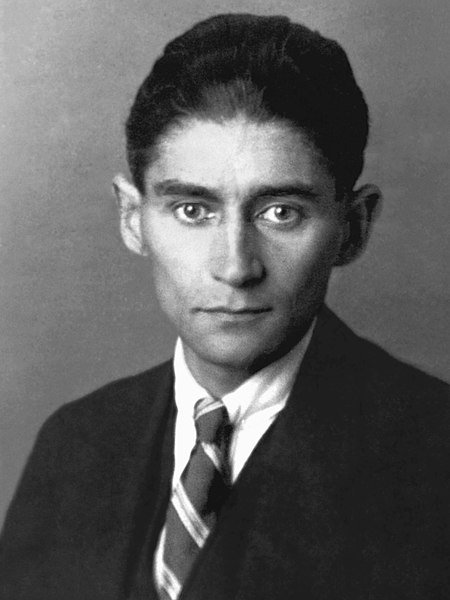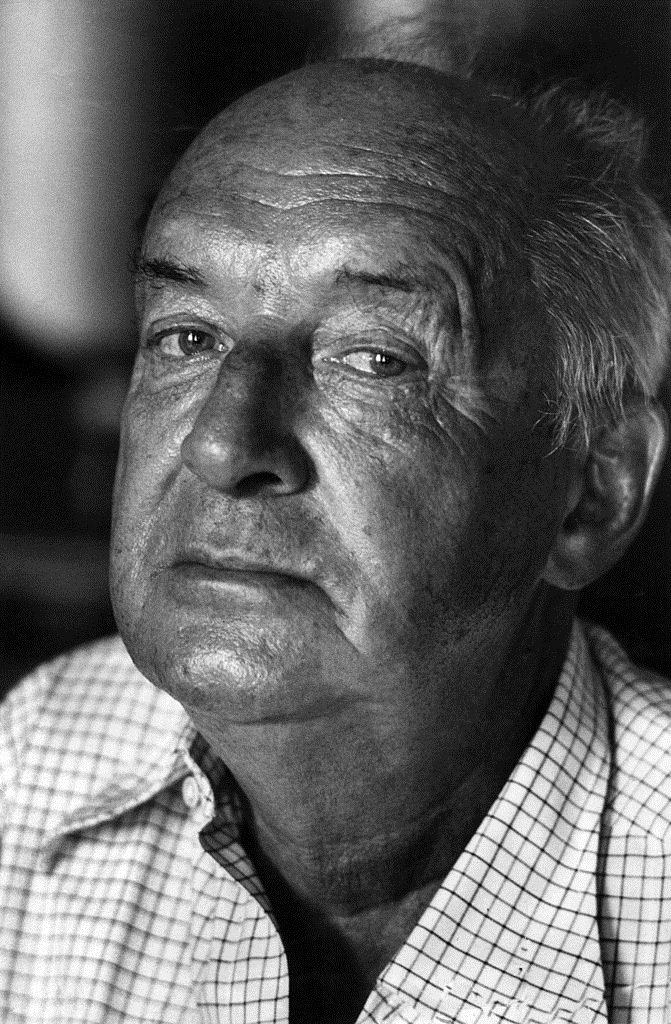Top 10 quirky habits of famous writers - inspiring or weird?
It takes a lot to write a bestseller. Check out some of the quirky habits of famous writers, which helped them on their road to world renown.
Every writer has their off days, where the skies are grey, the mood is lazy and motivation is simply non-existent. Some, like Stephen King for example, will write daily no matter what and push through until they reach the daily goal. Kudos to Stephen, but for the rest of us the battle to put words to paper is often not so easily won. And it doesn't happen only to starting writers either. Mark Twain left the manuscript for Huckleberry Finn on a shelf for 7 years before a sudden strike of motivation prompted him to finish it.
Famous or unknown, we've all faced the judgmental stare of the blank page and the search for a universal strategy to keep us on track has become a sort of Holy Grail to the literary community. Unfortunately, such a strategy has not yet been found, but it's absence has prompted many wordsmiths to utilize imaginative, and often surprisingly quirky habits and methods to get the creative juices flowing. In fact, many world-renowned authors contribute their success to these strange little secrets.
So let's take a look at some of the eccentricities and odd routines that our favorite writers swear by. In this edition of our monthly segment, we will explore the quirky habits of:
Franz Kafka, who believed that motivation comes from complete exhaustion
Victor Hugo, who locked himself in a room until he finished his work
James Joyce, who preferred to write with big blue pencils or crayons
Anthony Burgess, who opened the dictionary to a random page when he was stuck
Friedrich Schiller, who found inspiration in the smells of rotting apples
Dan Brown, who likes to hang upside down
Honoré de Balzac, who consumed up to 50 cups of coffee per day
Vladimir Nabakov, who wrote his longest novel on more than 2000 index cards
Lewis Carroll, who wrote only in purple ink
Agatha Christie, who enjoyed looking at crime scene photos while taking a bath
Disclaimer: This article uses affiliate links, meaning: at no additional cost to you, we earn a small commission if you click-through and make a purchase. As an Amazon Associate we earn from qualifying purchases. We only feature products that we believe in and use ourselves. Your support means the world to us and allows us to host this website. Thank you!
Last known photograph of Franz Kafka, Franz Kafka: Pictures of a Life by Klaus Wagenbach (1984)
Franz Kafka
Kafka, author of the highly acclaimed novels The Trial and The Metamorphosis, believed that inspiration is found within exhaustion, so he had the quirky habit of physically and mentally pushing himself before he ever sat down to write a single word. Between working 12 hour shift, exercising and spending time with his family, Kafka usually didn't start writing until late in the evening and he would push himself to continue until the crack of dawn on more than one occasion.
Even though we're still questioning when did Kafka find time for trivial matters, such as sleep, it is undeniable that his iron clad discipline played an important role in his success. And while we rarely see writers going to such extremes nowadays, many acclaimed novelists swear by several of the individual elements from Kafka's regimen - physical exercise to boost creativity and motivation, or writing predominantly at night time.
Victor Hugo by Étienne Carjat, 1876
2. Victor Hugo
The author of Les Miserables and The Hunchback of Notre Dame was notorious for the radical methods he used to keep his deadlines (which he often established himself). In a now famous example, he wanted to finish the story of Esmeralda and Quasimodo in under half a year, so in the fall of 1830 he established the habit of buying a bottle of ink and locking himself in a room until it ran out. Hugo also kept supplies and furnishing in the room only to the extent of bare necessities, in order to avoid distractions and focus on the task at hand.
"Disappearing from the world" for a time to write the next great novel has been a staple in the bucket lists of many aspiring writers, yet few actually have the mental tenacity to go through with it. Nonetheless, Hugo's success (yes, he did in fact manage to complete The Hunchback of Notre Dame before the deadline) will always serve as inspiration and proof that sometimes falling off the face of the Earth pays off.
James Joyce in a September 1922 issue of Shadowland photographed by Man Ray
3. James Joyce
James Joyce is notorious for his eccentricities, having written most of Finnegans Wake using mostly crayons on cardboard. As strange as that sounds, this isn't even the strangest of Joyce's quirky habits. He did some of his most inspired work while lying down flat on his stomach. Using a pen was also too mainstream for him, so he opted for large blue pencils. On top of all that, he was also fond of wearing a white coat while writing.
If at this point you think that perhaps Joyce shouldn't have been wearing the white coat but being treated by someone else who did, you might have judged him a tad too harshly. Most of these quirks were Joyce's improvised modification to actually help him see what he was writing. His eyesight got so bad at some point that he switched to much larger pencils and pads, while the white coat helped reflect light onto the page. All in all, as strange as some of these habits were, we have to admire Joyce's creativity and dedication to his craft.
Anthony Burgess at work. Image courtesy of anthonyburgess.org
4. Anthony Burgess
There are authors, like Robert Jordan, who can fill two thirds of a book with descriptions so intricate that a reader can easily imagine themselves literally standing in the middle of a scene. Or, you know, sometimes forget the beginning of the scene. On the other end of the spectrum, there are other writers who still excel at making detailed descriptions but they find the process so tedious and boring that they lose all motivation and prolong it indefinitely.
Anthony Burgess, author of A Clockwork Orange, was one of the latter and he developed a fascinating technique of dealing with what he found to be the more boring aspects of his work. Any time he was stuck on making a detailed description, he would simply pick up a dictionary and open it on a completely random page. He then challenged himself to make the description using only the words he saw on that specific page. He used this trick multiple times to "...build up a room, build up a scene..." and even popularized page 167 in R. J. Wilkinson's Malay-English Dictionary by using the words on it to describe a hotel vestibule.
Portrait of Schiller by Ludovike Simanowiz (1794)
5. Friedrich Schiller
"An apple a day keeps the doctor away." We think that Friedrich Schiller must have been the most dedicated advocate or that well-know phrase, yet perhaps he didn't know what to do with the apples once he actually got them. The author of The Robbers and Wallenstein famously left apples in his desk drawers and deliberately let them spoil. Evidently, the putrid aroma they produced had vast inspirational properties for him.
Truth be told, this method would probably inspire anyone to write faster, if only to be able to leave the desk's vicinity as quickly as possible.
Dan Brown, Photographer: Philip Scalia
6. Dan Brown
Much like Franz Kafka, Dan Brown is a firm believer in straining your body physically in order to stimulate your writing mojo. But where Kafka went with a more traditional approach in excessive volumes, Brown's methods are a tad more unorthodox.
The author of Inferno keeps an hourglass on his desk at all times when writing and has the habit of having exercise breaks every hour or so. However, he believes that the best way to deal with writer's block is to simply hang yourself upside down and stay there until you figure out a solution to your problem.
Brown may find this method relaxing and helpful for his writing, but be sure to take proper precautions before attempting to emulate him. Might be a good idea to have someone else there to assist in case you get stuck, since hanging like a drying salami for a few hours is probably not the effect you'll be going for.
Portrait of Honoré de Balzac by Jean Alfred Gérard-Séguin
7. Honoré de Balzac
Writers love their "elixirs". Some, like Hemingway and Bukowski, preferred the harder stuff. Others, Like de Balzac test the limits of their digestive system by consuming copious amounts of coffee when writing. The French novelist, famous for classics like Lost Illusions and Eugénie Grandet, was so obsessed with the beverage that he could consume up to 50 cups a day (and no, that's not a typo).
This regimen was responsible for completely upending his daily routine and dub him an oddity in the eyes of his fellows. He would work mostly at night, consuming coffee like his live depending on it, and would regularly do fifteen hour stretches of writing. He even once claimed to have worked for 48 hours with only about 3 hours of rest in between.
Studies on de Balzac's life have concluded that due to his excessive caffeine consumption, he is likely to have suffered from severe insomnia, which contributed to the multiple health problems he suffered from throughout his adult life.
Vladimir Nabokov in Montreux, Switzerland, 1973
8. Vladimir Nabakov
Taking a break from quirky habits that may very well kill you, we're jumping back to an author who had more tempered, if not less eccentric, methods of battling writer's block. Nabakov was a huge fan of index cards and kept them on or near his person at all times, ready to write down any inspiring thoughts that occurred to him. In fact, he even kept some under his pillow in case any of his dreams had elements that he could adapt in his work.
The author also famously produced most of his works on such index cards. His longest piece, Ada (1969), required the use of more than 2000 of them, which he kept in a slim box. Nabakov would frequently re-arrange the cards as well, allowing him to write non-sequentially and continuously adjust and edit his work.
Lewis Carroll self-portrait c. 1856, aged 24 at that time
9. Lewis Carroll
Lewis Carroll's writing habits are the stuff of legend that would have fit right in should he had ever found himself in his own fictional realm of Wonderland.
The author was a firm supporter of standing desks, often preferring to work at one, even before he first started writing professionally.
Another habit, which he acquired long before he devoted himself to the art of writing fiction, was using only purple ink to put his words down on paper. According to Just G. Schiller, a founding member of the Lewis Carroll Society of North America, "Carroll did not begin using purple ink until 1870. That's when Christ Church Oxford gave him, and all members of the faculty, purple ink to use to mark students' papers"
The author must have been so fond of the unusual colour that he continued writing some of his most famous works with it. A fact, which has confused generations of dealers and collectors who have had the chance to inspect some of his original writings and first editions up close.
Agatha Christie, photo courtesy of goodreads.com
10. Agatha Christie
Rounding up our list is another apple enthusiast. Agatha Christie, known all over the world for her 66 detective novels and 14 short story collections, at least knew to consume the apples, yet she did so in a the most disturbing manner. She was known to eat the fruits while soaking in her bathtub and examining gruesome murder photos, which served as inspirations for many of her novels. Whatever floats your boat (or apple), we guess.
Christie unfortunately had to discontinue her habit when she became thoroughly dissatisfied with the quality of baths available to her, saying that "Nowadays they don't build baths like that. I've rather given up the practice.".
Did you enjoy our list for the top 10 quirky habits of famous writers? Have you tried any of them and care to share your experience? Let us know in the comments below and stay tuned for part 2.












